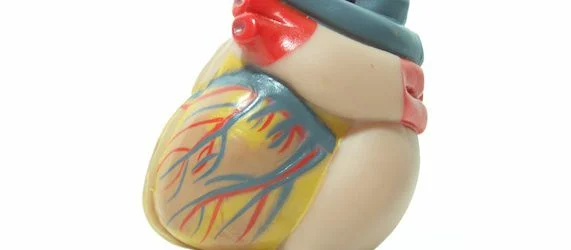For the first time ever, the optimal structure and cell ratio associated with heart function have been identified.
This remarkable discovery was made by a team of researchers at the University of Toronto's Institute of Biomaterials & Biomedical Engineering (IBBME) and the McEwen Centre for Regenerative Medicine, and published as a foundational study in top biomedical journal PNAS (Proceedings of the National Academy of Science) this week. Based on this information it became possible to engineer the world’s first living, three-dimensional human arrhythmic tissue.
In a milestone study researchers have tried to define and formulate the precise type and ratio of cell types that produce highly functional cardiac tissue.
Nimalan Thavandiran, fourth-year IBBME PhD Student and first author of the PNAS study, explained that hearts consist of more than one type of cell. He went on to say that scientists had previously been unaware of the method required to combine various cell types in engineered heart tissue that would allow it to achieve the composition and maturity level of the native human heart.
The methodical separation of different cell types obtained from human pluripotent stem cells and their subsequent re-composition is what allowed Thavandiran to be successful.
By utilising scoring metrics linked to functional hearts such as contraction, electrical activity and cell alignment Thavandiran was able to devise a formula for engineering highly functional heart tissue. As stated by the author, the composition of the cells was vital to their research as they discovered a mixture of 25% cardiac fibroblasts (skin-like cells) to 75% cardiomyoctes (heart cells) to be the most efficient.
The next step was to grow the carefully composed cell ratios in three-dimensional "wires" that imitate the human heart tissue’s structure.
Corresponding author of the study and Canada Research Chair in Stem Cell Bioengineering at IBBME and the McEwen Centre for Regenerative Medicine Professor Peter Zandstra emphasised how remarkable the result of the study was, as the team was able to miniaturize the tissues into human heart micro-tissues, which can be used to measure normal and diseased human heart responses to drugs.
Based on their correct heart cells composition, the next achievement was the design of first-ever three-dimensional arrhythmia tissue model.
Affecting millions of people every year, arrhythmia is caused by an interruption of the feedback of electrical pulses of the heart, with the consequence that it is no longer able to contract and pump blood effectively.
By engineering the circular tissue model associated with arrhythmia through the correct cellular composition, the team of scientists then applied electrical pulses to the arrhythmic tissues, 'zapping' the irregularly beating tissue into a state of regular contractions.
Due to the difficulty in growing human heart cells it has been a significant concern for cardiac researchers to be in a position to engineer highly functional heart tissue from human stem cells.
Professor Milica Radisic is corresponding author Associate, core faculty at IBBME and the Department of Chemical Engineering and Applied Science, and Canada Research Chair in Functional Cardiovascular Tissue Engineering, and she confirmed that a truly biomimetic system necessary for cardiac research was now obtainable by combining the compositional knowledge with electrical stimulation and mechanical stimulation.
Thavandiran stressed the urgent need for highly functional heart tissue to perform important drug screening research, and concluded that the team was working towards bringing the model to the marketplace.
Source: Science Daily
20 November 2013
Latest Articles
Research, Arrhythmia, Heart, heart tissue, stem cells
For the first time ever, the optimal structure and cell ratio associated with heart function have been identified. This remarkable discovery was made by...










